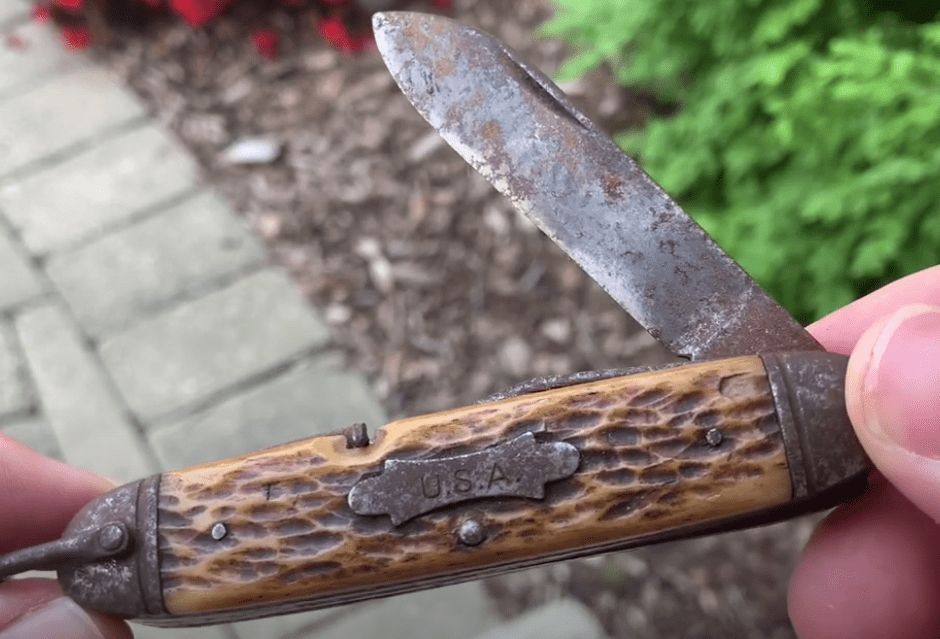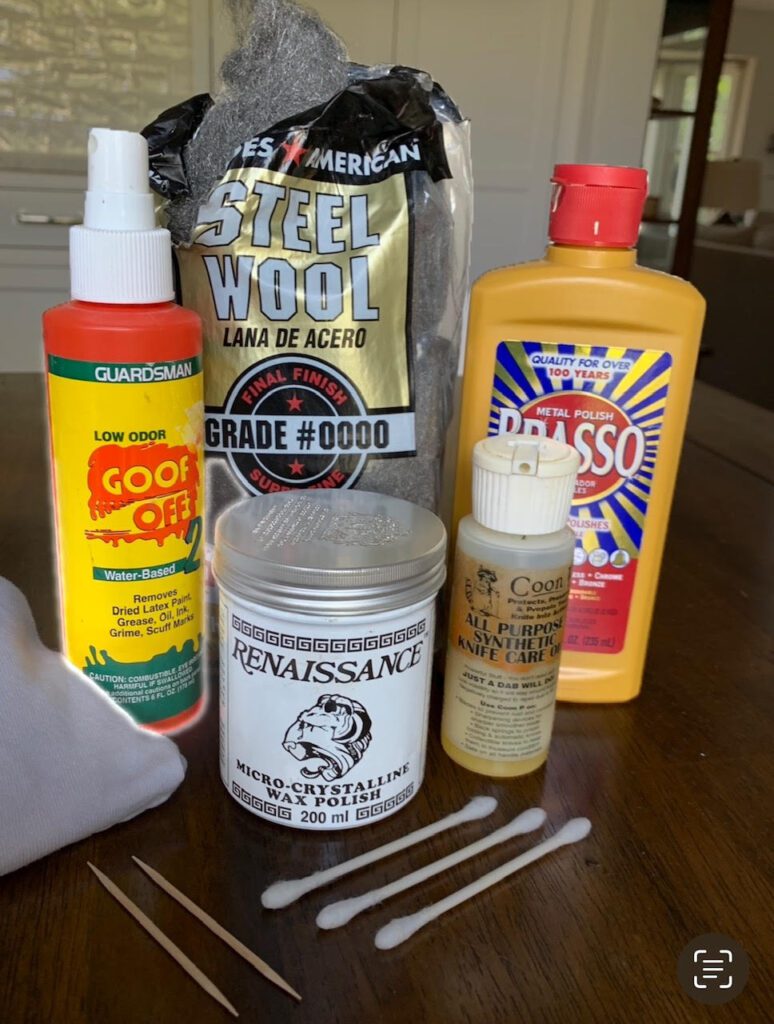Guide to Collecting Pocket Knives, part V
Thanks for checking out my guide to collecting old pocket knives. I hope you find this information useful and enjoy the content. The following contains affiliate links.
Cleaning Your Pocket Knives
Cleaning vintage pocket knives requires careful attention to preserve their condition and value. Cleaning the knives will help to make your knives look better now and it will prevent their condition from deteriorating in the future.
Removing dirt: I like to start by removing any loose dirt, gunk and pocket lint that has accumulated inside the knife with toothpicks, cotton swabs (Q – Tips) and paper towel. I use Goof Off / Goo Gone to get rid of any price tag or sticky residues. These products also help to clean the grime off of dirty blades as well.
Make sure not to use this product on celluloid or composition handles as this may damage them. I also like to do a test in a small area before I use the product on the knife as a whole.
Removing rust: once the knife is “clean” it’s time to remove any active rust. To remove the rust from an old user knife (no factory polish left), I like to put oil on the knife, let it sit for a 30 min or so and then use the finest steel wool (#0000) to remove the rust. This does not harm the blade, makes everything smoother and improves the overall look of the knife. This process preserves the patina of the blade and keeps an old knife looking old.

Some people like to clean the blades to the point where the blades are shiny (using a buffing wheel) but that is not my taste.
Cleaning excellent to mint knives: Do not use steel wool or anything abrasive that may damage the finish on the blades. Do some light cleaning first and wipe the blades down with a soft, cotton cloth or t shirt.
Additional Tips:
- I especially recommend putting some light oil (mineral oil) on wood and bone handles. This makes them look nice and rich!
- Make sure to put some oil in the pivots of your blades for smoother opening and closing. OIL THE JOINTS was a motto (and reminder) used by Sheffield knife maker, George Wostenholm, a Sheffield knife maker.
- I use a product called Brasso to polish different surfaces to create a real shine. I use them specifically on the brass bolsters of Buck 110 knives – bringing them back to their original luster.
Prepare for storage: It is recommended that you put a protective coating on your valuable knives before you put them away in storage. A product called Renaissance Wax (Amazon affiliate link) is used in museums to protect all sorts of valuables made of different materials, including steel, wood, leather, etc.
This product is lightly applied with a cotton cloth to the blades and handle of your knives. Lightly wipe the knife down and it is ready for storage!

Purchase some of these items on Amzon. Contains affiliate links.






Storing Your Pocket Knives
Store your vintage pocket knives in a clean, dry environment away from extreme temperatures or humidity. Regular cleaning and maintenance will help preserve the appearance and functionality of your cherished vintage pocket knives for years to come.
There are many options when it comes to keeping the knives in your collection. You can either store them away or display them.
Many people enjoy displaying their knives in a glass case or a cabinet. Some even include lighting to make the knives stand out, especially during the evening hours.
The other option is to store the knives away. One way to do so is by using knife rolls or case (Amazon affiliate link). This is the most common way to store your knives when they are not being displayed. You will see many dealers and collectors toting them around at knife shows. A similar option is a knife case that unzips and unfolds like opening a book. There is padded storage on both sides of the case. Each knife roll and knife case can easily fit up to 50 small to medium pocket knives. They are typically priced quite affordably.
NOTE: beware of storing knives with celluloid handles with other knives in your collection. Since celluloid is an organic product it can deteriorate over time and can cause “outgassing” or celluloid rot. This can lead to tarnish and rust on the metal surfaces of other knives.
